20th-Century Virginia
20th-Century Virginia Wrapup
/
Depending on what changes they think need to still happen, they can make posters, or write letters, do interviews or whatever they can come up with to be creative and get their point across.
- What circumstances might justify segregating students? Are there any?
- Let's think of home. Would it be justifiable if your parents extend privileges to your siblings, such as access to TV, internet, video games, clean and comfortable bed, clean clothes, good food and water, toys, and vacations, but withhold these things from you?
To further unlock the concept of equality, I will introduce "Desiderata" to my students. We will read them together. I will prompt my students to write their own "desiderata" or declaration of fairness and equality. We will frame each other's work and display them on the wall.
Here's an idea for a class project (extension): Research a famous historical figure who broke barriers and fought against racial injustice and discrimination and prevailed.
- Middle
- High
All students will be required to have these events on their timeline: 13th, 14th, and 15th Amendment, Plessy v. Ferguson, Brown v. Board of Education, the Civil Rights Act of 1964, and the Voting Rights Act of 1965.
Students are then free to choose their own events in the history of segregation and civil rights. They must add at least 8 more events to the timeline. The criteria for these events are: 2 events must be related to African American women's rights, 2 events must be related to the life of a civil rights leader, and 2 events must be related to Virginia history.
Using my mother's yearbook and her oral history (class of '66 in a Loudoun County School) we look at demographics. How has that school changed? How has that school remained the same? Which students made it to school on a regular basis? Ending always with the why. Why is it important to understand? Why did these things play out the way they did? My mother and her siblings came down on separate sides of integration: my mother befriended the black girls. My uncles called her horrible names. How was that indicative the social history of the state during the Civil Rights? How has it all worked out since then? What has happened? Are there still hints of the old Virginia in the current systems (educational, political, social)? How have the demographics of Northern Virginia's 21st century business eased (or aggravated) the divisions we give ourselves.
I have the advantage of being part of a family who has lived in the same area of VIrginia for generations (going back to the late 18th century). There is a wealth of knowledge at my fingertips. My grandparents, parents, aunts, and uncles lived through the integration fight. My family moved from rural to suburban as the county grew. We lived on farms until the 1980s, many are still engaged in some type of agribusiness. I use all of my first-person history and second-hand stories in my classes.
When my son was in the second grade, he brought home a history study guide. It had Maggie Walker on it. I had never heard of her, so I did some research. To my surprise, she lived in Richmond. We made a day trip to see her house and the bank she was president of. We learned so much about her and really enjoyed the adventure. That got me thinking, once students finished their lesson about her, the schools should provide a field trip to Richmond. That's one way to make history come to life!
The connections between the desegregation movement and the Black Lives Matter protests from summer 2020 is an obvious one to make, but can be helpful in having the students understand what their grandparents went through in order to get their free public education.
Students need to understand that the end of the Civil War was not the solution to all racial problems and that equality was not an automatic benefit of the Union victory.
One topic that specifically interests my students is the Civil War. It's no thing to see students wearing sweatshirts with Confederate flags. The first time I saw this, I was pretty shocked; I mean it's 2020. Many students will defend the flag with the statement, "It represents pride." I then love to speak with them about reasons and motivations about why the Confederacy chose to split from the Union and in defense of the institution of slavery. This usually leaves them questioning me with, "So the Confederate flag supports slavery?"
I don't directly answer this question, but it becomes clear that these students are seeing it in a different light. A big part of me wishes that the flag would just go away. The only thing it's been good for is to create division, hatred, and bad memories of a nation that once fought between itself causing over 620,000 casualties.
When we become more educated as a nation, rural and urban areas alike, we will be able to have real conversations with diverse sets of people. We will be able to be empathetic of other people's life stories and make connections based on those stories. To be empathetic, we must practice empathy on a regular basis.
Titled Then vs. Now. Using a variety of pictures, news articles, letters and other resources.
School conditions comparisons by race" PDF (https://www.pbs.org/newshour/extra/app/uploads/2014/04/School-comparison-chart-1.pdf)
1. Ask students to compare and contrast each of the three sets of pictures. Have students write down their observations in a two-column chart, one for black and one for white.
2. Next, ask students to answer the following question using their observations of the pictures. "Where school facilities in Prince Edward County equal for both black and white students? Why or why not?"
Questioning when observing these primary or secondary resources.
How did this effect individuals and families?
What connections can you make?
What do you notice?
Does pertain to your life in any way?
Do these resources give you enough information to understand the reason for the change? Do you need more information to understand this?
Was there anything else happening during this time period that has and effect on this movement?
I would like to use speeches and newspapers articles to really document the backlash by white citizens to the desegregation order. and also show writings by African Americans students and the horrors they had to live through and how they had to be fairy quiet about so that schools wouldnt remove them as the instigatiors
I would have students complete a Great Depression Simulation. This Great Depression Simulation is not only one of my students’ favorite activities during this Virginia Studies unit, but it is also one of their favorite Virginia Studies activities for the entire school year! With this dice game, students roll to find out what their salary will be. Then, throughout the activity, they face both positive and negative financial situations that Virginians experienced during the Great Depression. The goal of the activity is not to be evicted from their home before the end of the game. This simulation activity always helps my students better understand what life was like for Virginians during the Great Depression and why so many people were homeless. It is also a great way to integrate math skills into Virginia Studies. We would also review regions of Virginia. During the Virginia in the 20th Century and Beyond Unit, students examine how Virginia transitioned from a rural, agricultural society to a more urban, industrialized society. When introducing this strand, make sure to take time to review the regions of Virginia. You can do this by having students label where different industries such as coal mining and government jobs can be found on a map of Virginia. As students label their maps, be sure to discuss the characteristics of each region and why a certain industry might be found in that region. Students will also research famous Virginians. The Virginia in the 20th Century and Beyond Unit is a great time to integrate ELA skills because there are so many Virginians that students are expected to identify. Use this as an opportunity to introduce your students to research projects by having them research a famous Virginian. Students can show what they discover in several different ways such as creating a Google Slide presentation, writing a five-paragraph essay, or creating a poster.
I think it would be important to design a lesson that would allow the students to identify with the students of the mid 1900s. The issue of school desegregation was one that dealt directly with the teens of the time.
I would open asking if there was a 'nicer' high school in the county. Why was it nicer? Most likely they would have an answer about a newer school, or maybe about teachers or principals. We would talk about if any of them ever got jealous about not going to the 'new school' or if we are at the new school do they get tired of people pretending like our new school was perfect. This would hopefully get them thinking about 'fairness' and resources available to different schools.
Then I would introduce images of segregated school and the quality of the segregated schools. Hopefully I could find some first hand written accounts from teens at the time (of any race). We would look and read as a large group.
Lastly I would ask them to write a diary as a student at the time. I would ask that they write two entries- one as a student in a segregated school (of either race) talking about their day and what they did at school. The second entry would be in favor of desegregating schools, again written as either race, but they would need to make a logical argument for desegregation from their chosen POV.
The conversation and analysis can be broadened by examining the differences between schools in rural areas those in more urban areas.
After filling in the Venn Diagram with students’ observations, I would ask students to describe why separate does not mean equal.
Welcome", about a diverse, inclusive school.
- Middle
- High
Next we could look at the differences between Northern and Southern states regarding child labor laws and ponder reasons why this might be.
I also like the idea of students looking at and reading about the Virginia constitution of 1902. This would bring the Jim Crow Era “home” to students. Students would look at a primary source associated with the 1902 Constitution, like the one in our module. We could discuss who (if anyone) fought against this. How and why did the federal government allow this in light of the 15th amendment? The language is blatant defiant of our National constitution.
ALso, older students could write a journal entry from the point of view of an African AMerican student in a segregated school.
I would have my students reflect back on what life was like for all Americans (or Virginians) before, during and right after the Civil War. I would have them reflect on how after the Civil War there was some immediate changes but they were not permanent. I would ask them, how does this image reflect post Civil War Virginia? What are the children preparing to do? How had the lives of African Americans changed?
Today we look back on images like this one in disgust. Many of my students struggle with understanding how schools could be separate and how they wouldn't have been able to go to school with many of their friends because of skin color. I would ask them to think about how different the world we live in today is. I would want them to think about how we go to this place. Do we have a lot more work to do? Yes, but it is important to remember Americans have always been about progressing forward to human rights and I have faith that we will continue to press forward.
The 20th Century is a prime example of how quickly progress can be made.
They may also include in their visual essay images of more recent historical developments such as: technological industry, agricultural industry, and modern business development.
Other discussions will focus on the economics of Virginia in the 20th century. How are they different from the different eras of the past?
The second idea or topic I found more information on was that of Virginia's microchip industry. While I knew of our involvement in farming (I live in Augusta County), the importance of the Pentagon/Federal Government to Northern Virginia and the military bases to Eastern Virginia, I did not know we had so much tech. production in the state. Having students research industries from all of the region's of Virginia, it would be a neat project to set up a gallery walk in the classroom with pictures of different industries, companies, farms, firms etc. put up throughout the room by region in Virginia. It would give students an idea of how diverse Virginia's economy is and maybe inspire them to look in those directions as they move on to high school and beyond.
Another conversation I would like to get going with my students is about segregation. I would show pictures of white schools and African American schools from the 20th century as well as schools from today. I would ask them to explain the differences, if they thought it was fair how whites and blacks had different schools where the whites had better things, and their feelings on segregation in the 20th century.
I would begin by pointing out the inequalities of the century for African Americans and women.
I always tell the story of my grandmother who was born in 1915. At that time, women did not have the right to vote. My students are usually amazed by that fact.
I would use a lot of the information from this module to help them see how Virginia has changed and moved toward equality for all.
I think that the struggle of African Americans in the 20th century to obtain equal rights is a topic that we definitely need to address with our students. The picture of the bus will definitely create a personal connection with the students as many of them ride the bus lengthy distances to our rural school each day. I will also include the images of African American students peacefully marching and the signage on the schools indicating that if anyone were caught trespassing that they would be prosecuted. There are some powerful images that come up when one Googles the desegregation of the Prince Edward Schools. As an adult, I had heard of the case, but I had never taken the opportunity to read about it or view images from that event. While completing this module, I accessed several online articles and viewed images pertaining to this. I think that these could be valuable resources for my students as well.
Students will read biographies of African American from Virginia in the 20th century and create fictional(historical fiction) diaries of a student from this time period.
I am fortunate to have an aide in out school whose father drove the segregated bus in our county. She is a great primary source to use.
I would try to use local history publications showing the change in our area and connect to relatives many students have in northern Virginia due to jobs.
Despite the Civil War and freeing of the slaves the was not equality of the races.
I teach that our coalminers were treated as slaves, or worse, by many coal operators in the early 1900's as they had no value and could be replaced easily.
1. Famous Virginians of the 20th century - students create human cutouts of famous Virginias. Students research SOL facts and fun/interesting biographical facts about each person. Students then share out what they learned, discovered, or review with class.
2. Look at pictures from the 20th century and examine if the picture is showing discrimination or segregation. This will allow students to recognize how both discrimination and segregation were present in everyday lives of many African Americans during the 20th Century.
3. Review school policies in place during segregation, desegregation, and Massive Resistance. Have students compare the schools from the the 20th century to schools and policies today.
The discussion needs to be not just about how far we've come but also about how far we have to go.
Ongoing inequalities in the prison systems, policing, school funding across districts, job opportunities, and in many other areas obviously persist: hence the surge in protests across the country now.
The conversations can get dicey, and are a challenge to manage and keep civil, but must take place in our schools if we're to keep these subjects relevant to our students' actual experiences.
I would also focus on the case in in Prince Edward County in regards to Brown Vs Board of Education. Something that I have failed to implement.
Then having students write their feelings on where we are on this timeline and where should we go. I would also have my students do a reporter/interviewer as a way of communicating the facts in their terms. Maggie Walker, among many could be an interviewee.
Teacher will read the book: White Socks Only. Students will discuss why some people don't like other people because they are different from them. Teacher will ask questions that continue a gentle conversation of what makes a person different. Is it just color? Is there a way to change the mind's of people like this? Using your mindful thinking, what can we say or do for a person who isn't nice to people who may look or act differently from us? This lesson is a guided class discussion. After the discussion, the class will draw people in every color in our crayon box and hang them in the hallway.
I would like students to do some oral history interviews of people who lived through Civil Rights and segregation and write an essay of how schools were different and how it impacted their lives.
In the classroom, I would examine the history of education equality in Prince Edward County. A timeline would prove useful to show Supreme Court decisions versus the time frame that integration really took place in Virginia. I would, also, have students research the life and work of Maggie Walker. She fought for equality of blacks and women alike.
Part Two: Then bring in Lin's write-up on Rosa Parks & the Montgomery Bus Boycott to show how people can act to get unfair laws changed.
Discuss what are they passionate about and would like to see changed.
It is interesting the variety of industry that Virginia has attracted including factories, coal and computer chips. I was surprised that agriculture is still the largest economic industry accounting for 55 billion. It would be interesting for students to see how Virginia started prospering with agriculture and how that is still such a moneymaker.
l
If anything, I find it disheartening to teach about the changes that were made in the 20th-century to equalize the racial injustices and yet our society is still struggling with many of the same themes today. This topic, especially this year, has excited many of my students to become opinionated about history. I have never had students so feverous about this topic. I think that there are enough events, movies, media that depict similar issues today that they feel a personal connection to this era.
In order to apply this to my classroom, I would like to think of a way to roleplay the Davis v. Prince Edward County case and the sequential events leading up to the event. I think that a PBL could help describe the process that it took from Barbara John's strike to Brown v. Board of Education in order to enact desegregation. I think that it is important to impress the patience and diligence that it took to create this kind of change in society.
Instructions
Edward H. Peeples Prince Edward County (Va.) Public Schools
This site from Virginia Commonwealth University features resources related to Prince Edward County Schools, efforts to desegregate the schools after Brown vs. the Board of Education, and the massive resistance response by the district.
School Desegregation in Norfolk, Virginia
This site from Old Dominion University profiles the "Norfolk 17", African American student activists who worked to desegregate Norfolk public schools. The site features teacher resources with connections to Standards of Learning.
Massive Resistance through Political Cartoons
In this video, teacher Stacy Hoeflich and her fourth grade students analyze two political cartoons related to Virginia's massive resistance response to desegregation.


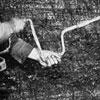
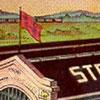
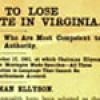
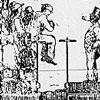
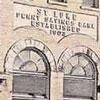
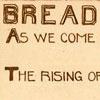
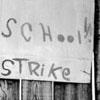
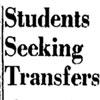
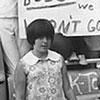


Comments
Flipgrid information
https://info.flipgrid.com/
Flipgrid
Tatana- I love this idea of incorporating technology with teaching the unit on 20th century VA. Super creative and the students will surely be engaged. Great idea!
Our current situation
Using the internet and its vast resources will not be a choice. We will be learning and teaching this way due to our current health situation. This may in fact, though painful for us the older generation, be for the best.
Constitution affects students
I like the lesson above in which the class studies the connection between court decisions and their lives. That really would get kids thinking about how laws and courts play an important part in their lives and are not just a separate part of our society.
Tracing our history through its laws
I agree but as a elementary teacher the instructor may have to plant the seed and watch it grow more than the older student who can strike out on their own and 'discover'.
Desegregation in Other Cities
Interesting thought! I would also like to have my students check out what it was like in their town during this era. Do they have grandparents that can talk about this and maybe learn first-hand what was it like back then.
Some really thought provoking
Some really thought provoking insight on here. I always love to read others application of the same material covered, and see the creativity and the thought process behind something I may have missed. I l live in SW portion of VA, so I work for the school system that was pictured mining the coal. So that was pretty cool to see a local application . I really have enjoyed this class and learned a lot .
SW Virginia
@ Patrick, when I tell people that I am from Smyth County, they always assume that we have coal because of our location. We have gypsum and salt here. I really liked that the photo was local, however. The kids would like that too, as many of them have connections with people who work there.
I think there are so many
I think there are so many great ideas that have been shared throughout this course. As a 5th grade teacher, it does not always apply to me. However, I am my school's lead Social Studies teacher and work often with our 4th grade team. I have a lot of ideas to share with the teachers.
Thank you everyone for your ideas and insights.
Teaching School Integration
Patrick is spot on with using Remember the Titans! It's an excellent example of desegregation in Virginia. It covers both perspectives and how hard it was to integrate. There was lots of opposition. This movie is kid friendly and gets the point across. I would incorporate it after using the photo of the kids getting on the bus in Prince Edward.
Titans
I really think that viewing this movie would resonate with students, too.
Primary Resources
I agree- 'Remember the Titans' would be a great way to introduce this part of Virginia's history!
Remember the Titans
I watched that movie when I was in school and it stuck with me for years. I still remember learning about segregation and crying when I found out that my mother lived in a time where she was not allowed to go to school with black people. She went to school during desegregation so she eventually had students of other races in her class, but initially did not. Some of my friends were/are black and it made me so sad that if I had grown up then that we couldn't have been friends. I had her accounts and what the textbook and my teacher said, but that movie really drove it home for me. Especially when the brick got thrown through the window of the coach's house.
20th Century Virginia Reflection
20th century Virginia was really interesting to me because it served as a refresher about the Civil Rights era and the important figures and events that made our state and nation into what it is today. I never knew that Maggie Walker was one of the first women to be president of a bank. Very interesting to hear about different people you don't normally learn about. I did appreciate this module because it may serve my students well as we teach them about their rights and freedoms that they now have because of terrific leaders and events during the late 1900's. When this concept gets taught to our students, my hope is that they are able to appreciate their freedoms and rights more than usual.
Observation
I like the Idea of linking family history to past events. I see someone on here lived in the area an experience first hand the impact on segregation in VA.
Virginia and United States History 1865 to the Present
The last two modules have been the most directly relevant to my class. I fully intend to devote more time to the Civil Rights Movements, especially the Virginia connection.
My thoughts...
The county where I teach is home of the first Virginia High School to close under the policy of Massive Resistance. When teaching about Massive Resistance in the classroom, we always examine historical markers within our community and discuss how WC High School was the first HS to close in Virginia during Massive Resistance. Students are not only learning about state /national history, but are able to make connections of national events in their own town.
I happen to be from New Kent
I happen to be from New Kent Co. So using local stories is always helpful- I am alluding to Greene v. New Kent of course.
I have used "Remember the
I have used "Remember the Titans" in previous class I taught and it is really good. Like many of you, making use of those people who have lived this history is great. I was blessed to have great people visit and talk to my classes. One of our residents was in the "Band of Brothers" as well as a coalminer. He had a wealth of information to tell us.
Good class and good ideas from class members
Lots of good information about Virginia's history in the class content and good ideas from others about how to teach this history. Very glad I took the class and will use some of your ideas along the way as I teach about Virginia and U.S. Government!
Then and Now Virginia Education
I like the idea of creating a comparison of Then and Now in education. Education has definitely come a long way. I also liked the idea of making life-sized cut outs of some of the people from then and allowing students to think about them and write about them. There are many great thinking ideas that could be used in a classroom to help students to become more engaged into learning about Virginia History through Virginia Studies. That is exactly what we will do, is study and learn more about Virginia.
I think this is interesting
I think this is interesting as well, especially considering the legacy of segregation as it still exists throughout the US today.
Looking at the Past but Moving Forward to the Future
I really like the comment on using the two movies "Remember the Titans" and Hidden Figures" to compare and contrast the time periods. My principal took our entire middle school to see "Hidden Figures." It was wonderful to see the student reactions. It really emphasized the "separate but equal" theme throughout. And we had much discussion about segregation, desegregation, and how the government played a role during that era.
videos of milestones
I like the idea of Ryan R. to show videos highlighting milestones in Virginia's history. Seeing and hearing video clips of famous people and events would have more of an impact than just listing them in their notebooks.
Change Coming Slowly
JefferyL makes a good point about how slowly change comes about in Virginia. It would be interesting to compare/contrast how quickly changes were made in other states in comparison to Virginia. Students could make arguments for why they think this is.
20th Century Virginia
I enjoyed reading all the comments from my fellow teachers and seeing many great ideas. Creating timelines to better sequence events would help students better see connections. Analyzing primary sources that are specific to Virginia history will help peak interest in students. Having students group together and discuss the successes of the civil rights movement during 20th century Virginia may inspire them to think about how to make the world a better place today.
In Response to AmandaP
I really like how you bring your students our family's farm. I think this would give your students some idea about how much work is put in to the agricultural field. This would be a perfect way to introduce how our economy was mostly an agricultural economy and how it moved to a more industrialized economy.
In Response to JessicaR
I really like how your have a lot of project based learning. I think that this helps our students apply what they learned about the topic we are teaching about. I also find more project based learning to be more engaging for students.
Project based learning
I also believe children learn better by projects and hands on activities instead of just hearing me talk about the subject at hand.
Response to The Long Journey Begins With One Step
I 100% agree with the author by stating that famous African Americans should not only be discussed during the month of February. This should be year long. Well said!
Response to "20th Century Then and Now"
I love the idea the author shared of the brown and white egg "experiment"/ discussion. I think this could lead to fabulous discussions and would be a great hook into 20th Century Virginia.
Response to "20th Century"
I will definitely be looking for guest speakers to come and speak to my students about Virginia's segregation versus desegregation.
Massive Resistance -- Direct and Indirect Effects
Great ideas by Robert regarding an analysis of Massive Resistance. As with any historical event, it is important to understand the motivations of the people involved, and what they stood to lose or gain from different outcomes to a conflict.
Response to DeborahH
I love the idea of having students read about the two court cases and compare and contrast them. I also teach 4th grade and think Ruby Bridges is a great book to read when learning about this time period.
Moton Museum
I appreciate the references to the Moton Museum in Farmville. I too have visited there and have wished I could take my students there for a field trip. It is very well done and the presentation we saw there would be a great addition to any lesson.
Great Ideas everyone
Any way that we can get students to empathize with the experiences of people different from them is beneficial. I appreciate all of the wonderful ideas!
20th Century Virginia Video Recap by Ryan R
We always study Martin Luther King.I think it would be a good idea to look at other African Americans and their achievements. Such as Mae Jamison or Ronald McNair two Afro-American astronauts. Euphemia Haynes or Katherine Johnson two Afro-American mathematicians.
Pictures
Several people offered ideas which included comparing and sharing photographs. I think students benefit so much from seeing/using pictures as learning tools. Many of my students haven't traveled and seen a lot of the state and would have no concept of areas such as Northern Virginia or cities like Richmond. Pictures would be instrumental in getting them to understand many things that have happened in the other areas of our state.
Local sources
I think we sometimes forget what a wealth of information lies within our local sources :)
Women's Suffrage
It would also be really interesting to look at Women's Suffrage in VA and why it took VA so long to ratify the 19th Amendment.
Integration and Segregation in Virginia History
Excellent ideas for lesson planning! Great observations and varied approaches to instruction!
TroisC Idea
I like your idea to have students learn many of the vocabulary terms that they often hear in today's times like equality, discrimination, poverty, etc...while also having students learn about the positives that have happened over time.
High School History
That's a good point.
Excellent Movie Ideas
I really liked the idea shared here of allowing students to watch movies like "Remember the Titans" and "Hidden Figures." I feel that both of these movies would not only catch students' attention, but would be excellent illustrations of civil rights and struggles for equality.
overall impression
Everyone had great suggestions! I have really enjoyed how the different subjects (especially music and World Connections) incorporated the material into their lessons and how everyone suggests to present material to the various grade and age levels/
Remember the Titans
I like the idea of using the movie Remember the Titans. It show a great deal about segregation and leads to a great discussion.
KristenC
I also found the tie in to 3 branches with checks and balance with Massive Resistance. It's great when we can instruct multiple sols under one unit.
Response to AmandaL
I really liked Amanda L's picture walk activity. As teachers, we can do a good job of describing the differences between white and African American schools in the Jim Crow era. However, using pictures of both types of schools would be more powerful and effective. It was a particularly good idea for the students to ask questions pertaining to when, where, and why the pictures were taken. Well done!
I also really liked this idea
I also really liked this idea! Have students see pictures comparing the same "features" of white and African American schools would really support connections of the severe and drastic differences in resources and opportunities those students encountered.
Response to 20th century Virginia
I really like the idea of focusing on Virginia’s diverse economy and making this into a research assignment. Breaking down Virginia into various regions also might help to teach geography and for students to see how geography influences economic development. I also like the idea of seeing how each region has changed throughout history.
Pages